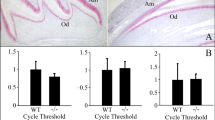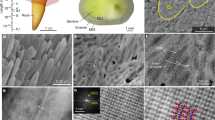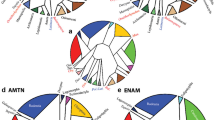Abstract
SINCE the publication in 1940 of Diamond and Weinmann's work on amelogenesis1, there has been, with a few exceptions2–5, widespread support for their views on enamel mineralization. The findings of a recent investigation in this laboratory, however, show that the later stages of mineralization of the enamel do not occur as outlined in the Diamond and Weinmann theory.
This is a preview of subscription content, access via your institution
Access options
Subscribe to this journal
Receive 51 print issues and online access
$199.00 per year
only $3.90 per issue
Buy this article
- Purchase on Springer Link
- Instant access to full article PDF
Prices may be subject to local taxes which are calculated during checkout
Similar content being viewed by others
References
Diamond, M., and Weinmann, J. P., “Enamel of the Human Teeth” (Columbia Univ. Press, New York, 1940).
Saunders, J., Nuckolls, J., and Frisbie, H. E., J. Amer. Coll. Dent., 9, 107 (1942).
Nuckolls, J., Leicester, H. M., and Dienstein, B. J., J. Amer. Coll. Dent., 14, 118 (1947).
Hals, E., “Fluorescence Microscopy of Developing and Adult Teeth” (Norwegian Academic Press, Oslo, 1953).
Engfeldt, B., and Hammarlund-Essler, E., Acta Odont. Scand., 14, 273 (1956).
Author information
Authors and Affiliations
Rights and permissions
About this article
Cite this article
ALLAN, J. Mineralization of Human Enamel. Nature 180, 1362–1363 (1957). https://doi.org/10.1038/1801362a0
Issue Date:
DOI: https://doi.org/10.1038/1801362a0
Comments
By submitting a comment you agree to abide by our Terms and Community Guidelines. If you find something abusive or that does not comply with our terms or guidelines please flag it as inappropriate.



